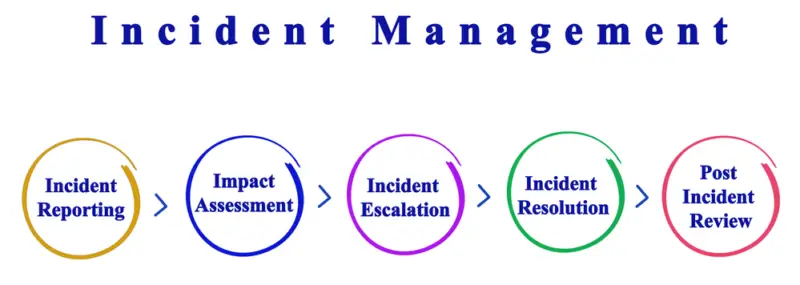Are you concerned about the potential risks associated with environmental monitoring? Do you want to understand how to assess and manage these risks effectively? Look no further – this article is here to help you navigate the environmental monitoring risk assessment world.
In this piece, we will delve into the purpose of conducting a risk assessment for environmental monitoring, providing you with a comprehensive understanding of the basics.
You will learn about the various risks that can arise during the monitoring process, and we will guide you on how to develop a risk-based approach to ensure the effectiveness and reliability of your monitoring efforts.
Let’s dive in and explore the world of environmental monitoring risk assessment together.

Purpose of Environmental Monitoring Risk Assessment
In this, you’ll explore the purpose of conducting an Environmental Monitoring Risk Assessment. Conducting this assessment, you’ll be able to identify potential risks and hazards that may impact the environment.
This’ll help you develop strategies and measures to mitigate these risks and ensure the protection and preservation of our natural surroundings.
Overview
Within environmental monitoring risk assessment, an overview reveals the interconnectedness of various factors. When conducting a risk assessment, it’s essential to consider all the risk factors that could contribute to microbial contamination.
This includes evaluating the effectiveness of cleaning procedures, identifying potential sources of contamination, and assessing the risk of microbiological contamination in different areas.
To accurately assess contamination risk, it’s crucial to use appropriate risk assessment tools and sampling methods. By taking a risk-based approach, you can prioritize areas more susceptible to contamination and allocate resources accordingly.
A well-designed monitoring plan is essential to monitor microbial counts and identify potential issues promptly.
Understanding the overview of environmental monitoring risk assessment allows you to implement effective measures to prevent and control microbial contamination.
Understanding the Basics of Environmental Monitoring
This includes understanding the definition of environmental monitoring, the principles guiding it, and the factors affecting its effectiveness.
Understanding these key points, you’ll be able to appreciate the importance of environmental monitoring and its role in assessing and managing environmental risks.
Definition of Environmental Monitoring
Explore the definition of environmental monitoring to understand better its importance in assessing potential risks.
Environmental monitoring refers to the systematic collection of data to evaluate the state of the environment and identify any changes or potential risks.
An environmental monitoring program involves monitoring various aspects, such as the contamination of isolators and the probability of contamination.
Its routine manufacturing processes, effects analysis, bacterial growth, material flow, personnel cleanliness, corrective actions, and physical construction.
Regularly monitoring these factors, companies can identify deviations from the expected standards and take necessary corrective actions.
This helps maintain the environment’s quality and safety and prevent any adverse effects on products, processes, and personnel.
Environmental monitoring is crucial in ensuring a safe and controlled environment for various industries.
Principles of Environmental Monitoring
Environmental monitoring risk assessment is a crucial process that involves assessing the cleanliness and safety of your environment.
One of the key principles of environmental monitoring is microbiological testing, which helps identify any harmful microorganisms that may be present.
Another principle is using a harmonized risk-based approach, which involves evaluating the risks associated with different aspects of your environment. This includes assessing the growth within cleanrooms, the safety of product contact materials, and the impact of operations by personnel.
To effectively evaluate your environment, ask yourself key questions about the air conditioning HVAC system, the presence of personnel, and other factors that could impact the cleanliness and safety of your surroundings.
Factors Affecting Environmental Monitoring
Now that you understand the principles of environmental monitoring let’s delve into the factors that can affect this crucial process.
It’s important to recognize that failure modes can arise from various sources, including human error, equipment malfunction, or inadequate training.
Regulatory requirements also play a significant role in determining the level of risk associated with environmental monitoring.
Identifying potential risks, such as contamination of the air or operating theaters, we can develop a robust routine EM program to mitigate these hazards. The contamination through air poses a considerable threat, as it can lead to contamination of the product itself.
Therefore, conducting regular environmental monitoring and assessments is essential to ensure the safety and quality of our environment and products.
Risks Associated with Environmental Monitoring
In this discussion, you’ll explore the risks associated with environmental monitoring. You’ll examine the microbial contamination risk and the probability of contamination in processes and surfaces.
Additionally, you’ll analyze the effects of the sampling methods used. You’ll also consider the importance of microbial counts and microbiological testing.
Remember to group complete concepts on their own lines and use contractions.
Microbial Contamination Risk
Bacteria and other harmful microorganisms can pose a significant environmental risk, threatening the health and well-being of humans and wildlife.
An environmental monitoring risk assessment must be conducted to address this concern. This assessment involves evaluating the microbial contamination risk and implementing a harmonized risk-based approach.
It is crucial to identify potential contamination sources and develop prevention strategies. Regular monitoring of cleanroom monitoring locations, such as microbiological air monitoring, is essential to ensure the adequacy of monitoring.
Conducting thorough environmental risk assessments and addressing contamination issues, we can protect our environment and mitigate the risks associated with microbial contamination.
It is imperative to prioritize the health and safety of humans and wildlife by remaining vigilant in our efforts to monitor and prevent microbial contamination.
Probability of Contamination in Processes and Surfaces
Take a moment to consider the potential harm that can be caused if you neglect to acknowledge the likelihood of contamination in your processes and on your surfaces.
Environmental monitoring risk assessment is crucial in identifying the probability of contamination in various areas.
Assessing the bacterial contamination levels and bacterial contamination rate, you can determine the potential risk and take necessary actions for contamination prevention.
The surface swab method can collect samples from different surfaces, while air flow methods can help assess the risk of airborne contamination.
By evaluating the risk, you can prioritize areas that require immediate attention and implement appropriate control measures.
Understanding the probability of contamination in your processes and on your surfaces is essential for maintaining a safe and healthy environment.

Effects Analysis of Sampling Methods Used
Evaluating the effectiveness of different sampling methods, you can gain valuable insights into the potential impact of contamination on your processes and surfaces.
Conducting an effects analysis of sampling methods is crucial in an environmental monitoring risk assessment. Bioprocess Online suggests creating a flow chart to visualize the sampling process and identify potential risks.
Random sampling is commonly used to assess the processing environment and identify areas of concern. This method allows for a comprehensive evaluation of the entire facility.
Regarding airborne contamination, air sampling is essential to measure air quality and identify potential sources of air contamination.
Understanding the effects of different sampling methods, you can make informed decisions about contamination prevention strategies and ensure the safety and integrity of your processes and surfaces.
Microbial Counts and Microbiological Testing
Understanding the impact of different sampling methods on microbial counts and microbiological testing is crucial for ensuring the safety and quality of processes and surfaces.
In environmental monitoring risk assessment, microbial counts and microbiological testing are vital in contamination prevention and infection control.
For example, air monitoring is conducted in operation theatres to assess microbial contamination and ensure sterility.
Critical control points can be identified by monitoring microbial counts, and appropriate control levels can be established to prevent contamination and maintain a safe environment.
Microbiological testing is also essential for assessing sterilization processes’ effectiveness and determining harmful microorganisms’ presence.
Therefore, a comprehensive understanding of sampling methods and their impact on microbial counts and microbiological testing is essential for effective environmental monitoring and infection control.
Developing a Risk-Based Approach for Environment Monitoring
In developing a risk-based approach for environmental monitoring, it’s important to consider harmonizing the approach for both processes and surfaces. By doing so, you can effectively anticipate bacterial growth and potential contamination sites within a cleanroom environment.
Additionally, analyzing material flow, product contact materials, and operations by personnel can provide valuable insights into potential risks and help develop appropriate monitoring strategies.
Harmonized Risk-Based Approach for Processes & Surfaces
Ensure your processes and surfaces are evaluated using a harmonized risk-based approach to protect the environment and inspire a sense of responsibility.
Environmental monitoring risk assessment plays a crucial role in preventing contamination and maintaining operation theatres’ cleanliness.
Implementing a harmonized risk-based approach ensures that processes and surfaces are thoroughly assessed for potential risks and contamination sources.
The environmental monitoring handbook provides guidelines and tools for conducting these assessments effectively.
It’s important to focus not only on monitoring pathogens but also on other factors that can contribute to contamination, such as air quality. However, air monitoring can be challenging due to the dynamic nature of airflow.
Following a harmonized risk-based approach, you can enhance infection control measures and create a safer environment for patients and healthcare professionals.
Anticipating Bacterial Growth & Potential Sites of Contamination within Cleanroom Environment
To effectively anticipate bacterial growth and identify potential contamination sites within the cleanroom environment, you can enhance your infection control measures and create a safer space for patients and healthcare professionals.
Environmental monitoring risk assessment is crucial in ensuring contamination prevention and control throughout production.
Implementing a harmonized risk-based approach, you can prioritize critical control points and allocate resources accordingly. Using a risk ranking system, a cross-functional team can identify potential contamination sites and develop strategies to mitigate the risk.
This includes regular monitoring of surfaces, air quality, and personnel practices. Aseptic processing manufacturing and batch manufacturing can benefit from this approach, as it enables the identification of vulnerable areas and the implementation of targeted interventions.
Adopting a proactive approach to environmental monitoring, you can create a cleanroom environment that minimizes the risk of bacterial growth and contamination.
Analyzing Material Flow, Product Contact Materials & Operations by Personnel
Now that you’ve anticipated potential sites of bacterial contamination within the cleanroom environment, it’s time to delve into analyzing material flow, product contact materials, and operations by personnel. This step is crucial in conducting a comprehensive risk analysis.
Performing a retrospective analysis and using assessment tools templates, you can identify contributory factors that may impact the overall environmental monitoring risk assessment.
Dedicated tools for air quality analysis and bacterial count testing are essential in this process.
It’s critical to involve a cross-functional team with personnel from various departments to evaluate all factors thoroughly.
This collaborative approach will help identify critical factors that may pose a risk to the cleanroom environment and enable you to implement appropriate control measures.

Conclusion
Conducting an environmental monitoring risk assessment is essential for understanding and mitigating potential risks. Adopting a risk-based approach, organizations can ensure proper measures are in place to protect the environment and prevent harm.
Understanding the basics of environmental monitoring and the associated risks is crucial for effective risk assessment.
Continuously monitoring and assessing the environment, we can make informed decisions to minimize the impact on ecosystems and preserve our planet for future generations.

Chris Ekai is a Risk Management expert with over 10 years of experience in the field. He has a Master’s(MSc) degree in Risk Management from University of Portsmouth and is a CPA and Finance professional. He currently works as a Content Manager at Risk Publishing, writing about Enterprise Risk Management, Business Continuity Management and Project Management.

